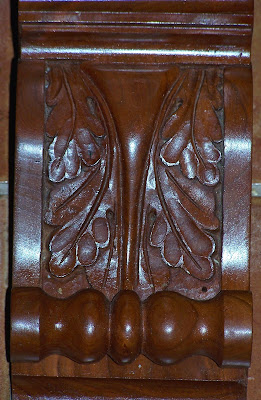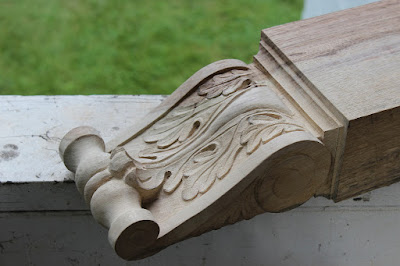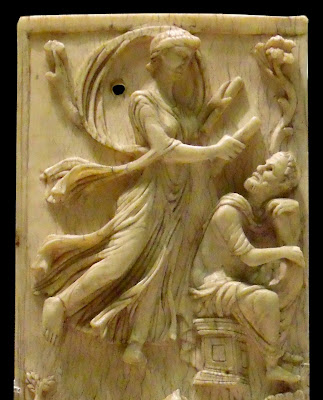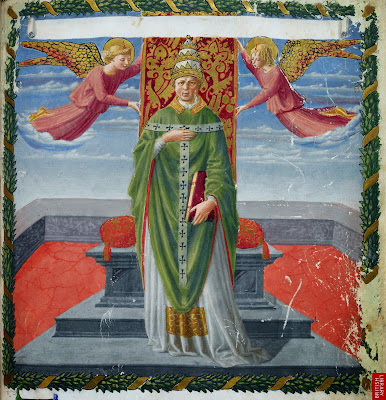In the last episode of this table project, I was holding out for some more cool weather so I could finish my steam bending. I got what I was waiting for on 21 May, when the temperature only got up to 13 C! At the time, I had been working on cutting out the shaped ends of the table feet, as you shall see in a moment, but with a day like that, I dropped everything and got my bending forms, steam box, firewood, insulation, and everything else that might be required ready. That was a Wednesday, the prediction for Thursday's weather came true and I got to work early in the morning.
At 5 in the morning I got the fire going and had water boiling in the tank by 8. At 11, a good friend of mine came over to help and we had the last three sections in the forms by 1,30.
That is the short, abbreviated version, the actual version has been deleted do to language censorship. A couple pieces did not want to cooperate as well as I would have liked them to, so they required a bit of verbal encouragement; no cracking allowed in this shop! In the end, all worked out well, and the bending operation is over and was successful.
 |
| An ancient wagon tyre made a good bending form |
 |
| The outside frame for the top |
Earlier, in the same week, I also planed flat the entire table top which had just been glued up in the last post; it turned out well, but required a lot of planing to get an even surface. (The pile of shavings in the picture is only a small fraction of what was actually produced.)
 |
| Flatting the table top |
And now on to the main topic of this post; the feet...
 |
| It all begins with a big chunk of timber 220mm wide and 100mm thick. |
This table is made of elm, but because these feet will be subject to bumps and bruises from chairs, mops, brooms, and everything else, I wanted to use a harder wood for them. I found this nice piece of American hickory; noted for its toughness, this should make very durable feet...even if it is not so easy to carve.
 |
| Two pieces cut to length |
 |
| The profile is marked out and saw-kerfs are made to remove the waste |
When I left home as a teenager, I landed a job working on a building site; we learned how to cut tenons by making multiple kerfs in the timber, breaking out the segments with a hammer, then cleaning up the faces with a chisel. When I started making furniture 20 odd years ago, this seamed to me the most logical way to do profiled shapes as well. If the timber is wider than it is thick, or thicker than 50mm this is the way I always do it; the 'right' method is often the one that works for you. (50mm or less in thickness can be cut quicker with a saw) I have no idea of what method one might have used "in period".
 |
| Faces cleaned and top edge moulding carved |
 |
| Ready to begin carving the volutes |
Though Vitruvius goes into great lengths to describe the proper method of designing a volute; as an artist, I just use my eye and sketch out what looks right. This method is sure to make any mathematician, architect or engineer groan, but it gets the job done. Once the design is to my satisfaction, I use an awl and make a series of points along the line, transferring the design onto the timber. Using the series of holes also helps because the form is still visible from the back side when I turn the pattern over to do the opposite end.
 |
| The spiral, pricked in with the awl, is clearly visible here |
 |
| Roughing out the design |
To carve these spirals, I choose chisels which have the same sweep (curve) as the section of the spiral that they span. I do a "stab" cut straight down, and then a couple gouge cuts to remove the chips. in this way, I work right 'round the entire design. Sometimes one does not have the perfect curve for a particular section; in these cases, a slightly less curved tool will do. Care must be taken not to go too deep into the intended exposed face when making the downward cuts.
 |
| A finished spiral; this form is known in Classical architecture as a modillion and served as an eave (overhang of a roof) bracket. In the application as a foot, it is actually upside down. |
 |
| Different day - different foot, but the same idea; this one showing the leaves carved in between the scrolls. (I had both ends done before breakfast) |
 |
| 11 AM, breakfast break is over (two days after the previous photograph) and it is time to begin carving the acanthus leaves on the second end. |
Sometimes I feel more like a woodpecker than a wood carver, and the day I worked out this design was certainly one of those days. One cannot over-emphasise the utility of having a sample of what one wishes to carve. I had no such sample, so had to work like a woodpecker hacking, poking, and chopping until I found what was hidden in the blank of timber. It took me the entire day and several hours of the next morning to carve the end which is away from the camera in this picture.
Once I had worked out the design, however, I made a paper template by rubbing over the carving with my finger. I then cut out the template, using the gouges which would be used to cut the wood, and then labeled each cut with the appropriate gouge number. In this way, I was able to make repeated and uniform shapes on all four feet.
 |
| The central 'vein' is drawn out free-hand... |
 |
| then cut with a 'V' gouge. After that, the remaining face is leveled and sunk below the surface of the sides. This task of removing excess material is known as "wasting away". |
I have a table with all my gouges laid out from smallest to largest in a shallow profile and a deep profile. I initiated this method to make it easier to pick up the tool I need without hunting for it in a pile of chisels as is visible in some of my photos from other projects. It is a good plan.
 |
| Keeping the tools (more or less) organised helps the work go more efficiently |
When I carved the leaf design on the side, it was simple enough not to need a drawing or a template, I knew which gouges to use, and approximately where to make the cuts. Carving a design as complex as these acanthus leaves was another matter entirely. Even if I remembered exactly which tool to use for every lobe, I would still mess it up, due to a mild case of dyslexia which gets me very confused when it comes to mirror images. I have made two rights or two lefts enough times to know that I need a pattern to guide me on things like this.
 |
| The sun is high overhead, and the first 'layer' of the leaves is set out |
Chop down, cut under, chop down, cut under... and so the day goes. One tricky part of this is that the grain is running parallel the length of the timber; when one chops down at right angles to the face of the foot, it is actually at an angle running with the grain. Therefore, when it comes to the under-cut, it often happens that the chips do not actually get cut loose, as the two cuts have not intersected completely. This can lead to some aggravation, and increases the length of time it takes, compared to carving on a flat surface.
 |
| 6 PM; the form is all there, now for the details and cleaning up work. |
I have carved a couple other versions of acanthus leaf brackets before, but this was the first time I tried the upward curving 'tongue' at the end of the leaf. It has always looked a bit challenging, and it turned out to be so, as well; not so much in complexity, but in the time it takes to remove all the waste material around it. By comparing this picture with the last one, based on the angle of the sun, it took me a couple hours to finish this part up.
 |
| The memory of this foot was my model, but this one has no upward curving end. (I did this one in 2006) |
 |
| 7,30 PM and it is finished |
 |
| A different angle for better lighting. I still need to do the underside of the end reels. |
When it takes 8 1/2 hours to carve the face of one foot, you realise you are not in this work to get rich. The work represented in these pictures took two full weeks of work (13 days) from dawn till dusk. I do it because I love it. Most people who get a job to make something, try to figure out the fastest way possible to get the job done and get paid. I do my work because I love it; the time it takes me to get it done is beside the point. Of course I try to improve my efficiency as I go along, and try not to waste time, but if my primary goal was money, I would find another profession. So long as I am able to pay the bills, and encounter customers who appreciate what I do, I will keep doing what I love; the way I love to do it - which is making things by hand.
 |
| Lighting is an important part of carving |
This was foot number three, which I began about 6 in the morning, In this picture, it is about 9 and the sun is at the right angle to really show up every mark of the blade in the wood. The funny thing about carving, is that one can carve the whole thing under one source of light, and have it look perfect; only to turn it around, and discover a thousand flaws. The best way to get it looking good is to expose it to multiple angles of light. This fact is why, when the temperature is neither too cold nor hot, I like carving outside. As the sun makes its course through the day, the light changes, and I can go back and work the blemishes which show up under different lighting.
 |
| 8 PM Saturday evening; three ends complete and the fourth under way (the lower foot is darker because it remained all day outside in the sun) |
To finish up, I use fine rasps, files, and small scrapers to smooth out the reels and the scrolls on the sides, the carving will remain as it is, save a bit of scraping with a small bit of a saw blade where there might be a bit too much tool markings. Overall, tool marks are what gives carving character and more appeal than machine "carved" ornament.
On Thursday night, after dinner, I finished carving the underside of the scrolls of the first foot, and did a bit of filing and scraping to give the reels a more finished look. Once that was done, I stood looking at it, and thinking how much like my 'child' the thing was. I then got a bit philosophical as I realised how much that was true; but on a much deeper level than I had originally been thinking.
Given however (too many) billion people in the world we are up to these days, the possibilities of your child being seen by more than the tiniest fraction of the population is nil. Of those who do see him or her, for the majority, he will only be a nameless face in a crowd. Others may see a boy or a girl; man or woman but nothing more than that. An even smaller number of people might take the time to notice a girl on a swing, a man on the corner with a newspaper, or someone driving in a big hurry to an unknown destination.
It will be the tiniest of all fractions of people who actually get to know Hans, or Maria, Peter, or Ingrid, on a personal level of some degree or other. In the same way, most people will never know my table exists, for others, it will be nothing more than that; a table. A few might get to actually noticing a foot on the table, but no one will know that foot; that child, as well as the parent. Only the parent knows all about its history, it flaws, and the labour and energy spent in its creation.
Videre Scire























.JPG)



